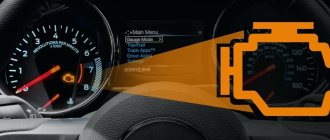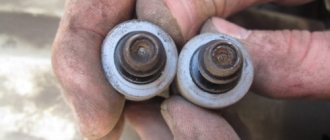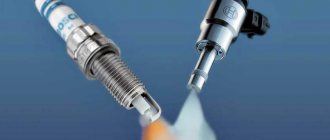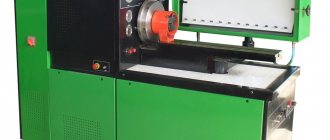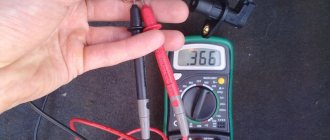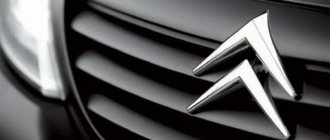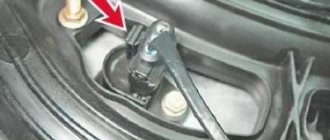Basic methods for diagnosing an injection engine.
Diagnostics
As a rule, the diagnosis of minor faults is easily and accurately carried out thanks to the functions of the on-board computer. If the device successfully reads errors in the operation of the engine, it will indicate the reasons for the incorrect operation of the car.
For proper engine operation, it is necessary to timely adjust the valves. During the operation of the car, under the influence of temperatures, the gaps between the valves change and disrupt the operation of the engine. Therefore, it is necessary to adjust the valves to restore engine functions. Adjustment of valves should be carried out with special equipment and relevant experience. Therefore, this procedure is often carried out in professional workshops.
injector diagnostics
If the injector does not work correctly or does not start at all, the first step is to visually inspect the surfaces of the working elements and electronic sensors. All conductors must be securely fastened to the devices. Incorrect operation of the injector is usually accompanied by characteristic sounds and odors. Experienced mechanics are able to determine by ear the cause of a malfunction in the engine. If the injector does not operate correctly, smoke often appears from the working surfaces of the engine. The causes of some problems can be determined by removing the air flow filter cover. If smoke appears from under the cover and leaks of working fluid are clearly visible, there may be a need for serious repairs. Accurate diagnosis of the injector is carried out using special equipment available only in specialized centers.
This is interesting: Self-replacement of the expansion tank on a Lada Priora car
Diagnostics of injection engines - how to detect a breakdown yourself?
What malfunctions most often plague injection systems ? The most significant malfunction can be considered a breakdown of the sensor that controls the position of the crankshaft. In this case, engine repair is most often required, since the alarm failure is caused by serious problems with the power unit.
Preliminary diagnostics of an injection engine with your own hands is quite possible, but to accurately determine the cause of the malfunction you will need special equipment, which is only available at service stations. If the fuel pump fails along the way, the only thing that can be done is to replace the faulty unit. If it is not in stock, then you will have to rely only on a tow truck.
The simplest failure is considered to be the failure of the phase sensor. The injection system is designed in such a way that in the event of such a malfunction, it begins to supply twice as much fuel. It is unlikely that you will be able to determine the cause of excessive fuel consumption on your own; this will require special instruments for diagnosing injection engines.
Scanners that work with a smartphone or computer
The most common and inexpensive diagnostic tool is the ELM 327 adapter. It costs on average about 1,000 rubles and is suitable for all cars that have an OBD II connector. The adapter can read and process signals from vehicle control units transmitted via diagnostic lines, and transmit them via Bluetooth, Wi-Fi or USB cable to a smartphone, tablet or laptop.
In order for a smartphone or laptop to understand the adapter signals, you need to install software on it. Often several standard programs are included on the ELM disk. And for specific ones, go to the Internet. Along with free software, there is also paid (200–300 rubles) software, which is distinguished by expanded functionality and better quality of work.
Various versions of the ELM 327 adapter.
Various versions of the ELM 327 adapter.
I inserted the connector into the OBD II socket - and the AutoLink AL329 scanner is ready for use.
I inserted the connector into the OBD II socket - and the AutoLink AL329 scanner is ready for use.
Programs are tailored for a specific car brand or perform a specific range of tasks. Moreover, they help not only to carry out diagnostics, but also to reconfigure individual systems and equipment of the car. For example, change basic parameters or activate functions hidden by the manufacturer that are already included in the hardware. Shift the temperature at which the cooling system fan turns on, adjust the algorithm of the variator operation, even carry out a small chip tuning of the engine - all this can be done by ELM. The adapter will also help out when selecting a used car - you can use it to check if there are any errors in the “brains” and if the VIN number matches the documents.
Almost all programs have a Russian-language interface. True, the decoding of error codes is often given in English. It’s not very convenient, but something else is worse: the error code is determined correctly, but the decoding sometimes does not match the code. Therefore, it is better to double-check the information; fortunately, on the Internet you can find a list of faults for almost any brand.
ELM 327 scanners are offered in two versions - 1.5 and 2.1. The former support many more protocols, and therefore the likelihood of a successful connection with a specific car is higher.
ELM 327 is not the only device of its kind. There are other adapters for diagnostics via the OBD connector. For example, the “Vasya-diagnostic” program, popular among owners of Volkswagen cars, does not work with ELM. For it you will need to purchase your own adapter - KKL 409.1.
The Multitronics C-590 route computer is designed for cars with round heating system deflectors, in one of which it is mounted. However, the device fits perfectly into the Kia Rio floor tunnel casing and shows many useful parameters, including the temperature of the working fluid in the automatic transmission.
The Multitronics C-590 route computer is designed for cars with round heating system deflectors, in one of which it is mounted. However, the device fits perfectly into the Kia Rio floor tunnel casing and shows many useful parameters, including the temperature of the working fluid in the automatic transmission.
Caring for the injection system
Injector care and inspection
It is recommended to clean the injection system every 20-30 thousand kilometers of the vehicle. There is no need to look at the manufacturer’s recommendations here, since the machine was tested under ideal conditions with excellent quality fuel. Unfortunately, many gas stations in Russia and the former CIS countries sell fuel of very low quality. And bad gasoline or diesel fuel means contamination of the injection system.
In addition, under the influence of high temperatures, a hard deposit can form in the injector, which significantly reduces the productivity of the entire system.
Therefore, you only need to fill the tank with good fuel, change spark plugs at least every 20-30 thousandth mileage of the car, check and replace air and fuel filters in a timely manner.
Diagnostics and repair of injection engines - briefly about the device itself
But first, let's look at what an injection engine is. How is it different from a carburetor? The main difference is the air-fuel mixture supply system. In previous engines, the fuel mixture was sucked directly through the carburetor, where the components were dosed, and then the gasoline was mixed with air. At the same time, due to imperfect design, the engine lost up to 10% of power.
In a fuel injection (or injection) engine, fuel enters the combustion chamber by forced injection at high pressure through injectors. Dosing and control of the amount of incoming fuel is carried out by electronics. As a result, the level of harmful emissions into the environment is reduced, and engine power is significantly increased, its performance characteristics are improved, and fuel consumption is reduced.
Advantages of injection systems:
- precise dosage of fuel supply;
- by optimizing the composition of the air-fuel mixture, the level of toxicity of exhaust gases becomes significantly lower;
- the dynamic characteristics of the car are improved, the injection system adjusts the fuel supply depending on the load;
- the use of an injection system leads to an increase in engine power by more than 7%.
Disadvantages include expensive repairs to the injection engine power supply system, fairly high requirements for fuel quality, and the availability of special equipment for repairs and diagnostics.
Proposals from professionals
If you don’t know where to get engine diagnostics done efficiently, quickly and at an affordable cost, then contact Vostok Auto. We have extensive experience in servicing cars of all famous and forgotten brands.
- Vostok Auto has been working in the car service market for many years and is one of the pioneers in this area in Moscow.
- Our team includes only professionals in their field - an experienced diagnostic electrician, a diagnostic engineer with higher education and a teacher-professor at MADI. Each of them knows the car from the “bones” to the last wiring, understands the processes occurring in the engine, which is very important for the correct choice of method of “treating” the car.
- Our technicians get to the bottom of the problem and give life to even the most hopeless machines with complex faults.
- Engine diagnostics, the price of which is not inflated depending on the cost of the car, is carried out using high-precision equipment, followed by “treatment” of the system.
- Modern diagnostic equipment: scanners, motor testers, smoke machines, oscilloscopes - we have it all in our arsenal.
We check the engine and injector using special equipment
To diagnose the engine injection system, you will need the following equipment and tools:
- Main controller diagnostic device. This could be a laptop or computer, a scanner-tester, or a self-assembled USB adapter, for example, K-Line, with installed software that allows you to read error codes. Using one of these devices, you can access the ECU parameters and determine the necessary functions in the operation of the actuators.
- Electrical tester. This device will be needed to monitor the battery voltage, measure voltage and resistance in various parts of the electrical circuit.
- Multicontroller (oscilloscope) for determining the polarity and sending a signal to the injectors and ignition coil. It should be said that a regular multitester will not work, since it has a low enough resistance to monitor the listed systems.
- Compressometer. With its help, the uniformity of compression across the cylinders is checked, in addition, it is possible to determine the degree of valve burnout, the condition of the spark plugs and the need to clean the injector, as well as the condition of the cylinder head gasket and other mechanical parameters.
Carrying out injector diagnostics
All of the above instruments and equipment are needed for a complete and correct diagnosis of the injection system; as a rule, they are located in specialized services, where there are also additional stands for taking measurements. Diagnosing an injector with your own hands without having the appropriate instruments is possible, but the test results will not reflect the real state of affairs, in addition, such a test will not determine whether the injector needs to be cleaned or repaired.
This is interesting: 3D wheel alignment - more than just measuring angles
Injector diagnostics - equipment, methods and recommendations
Calculator for calculating the working volume of an internal combustion engine
Calculator for calculating the cylinder displacement of a car engine
Many car owners who are faced with a fuel injection problem often hear on forums that the first recommendation is that the injector needs to be diagnosed, which often leaves them stumped in troubleshooting. Let's figure out what injector diagnostics is, what it is, and whether it is possible to diagnose the injector yourself or whether you must contact a service center.
Equipment and recommendations for self-diagnosis of the injector
Injector diagnostics is a search for the causes of problems with the operation of the fuel injection system and the engine as a whole. Ideally, the injector diagnostic complex should include: computer diagnostics, diagnostics of the injection system, inspection of the condition of the mechanical part of the engine. Thus, we see that if we want to diagnose the injector with our own hands, we must be able to competently carry out not only a visual inspection, know an idea of the operation of the system as a whole, but also have diagnostic equipment.
Active ignition sensors
Scanners are generalists. And there are also highly specialized specialists - inexpensive devices that allow for pinpoint diagnostics. For example, the scanner detected misfires in the air-fuel mixture in the cylinder. How can we determine the cause of these omissions?
An active USB sensor allows you to check, among other things, the correct operation of diesel injectors - and it “sees” the three-stage injection characteristic of modern engines.
An active USB sensor allows you to check, among other things, the correct operation of diesel injectors - and it “sees” the three-stage injection characteristic of modern engines.
This can be done using an active USB ignition sensor. The device works in tandem with an Android smartphone or tablet, on which you need to install the appropriate program. Diagnostics occurs in a non-contact manner: the sensitive part of the sensor is applied to the part being tested. And the screen will display a graph of voltage changes in the electrical circuit. In this way, you can find a fault in the ignition coils, injectors, crankshaft and camshaft position sensors.
These devices are usually purchased by service technicians - they are needed for in-depth diagnostics, and it is not advisable for ordinary car enthusiasts to purchase them. Moreover, their price is not so low. For example, an active USB ignition sensor costs about 10,000 rubles.
Do-it-yourself engine diagnostics: 4 useful devices
Equipment for self-diagnosis of the injector
- Pressure gauge for checking fuel pressure. It will help determine the condition of the fuel equipment (pressure regulator, performance of the fuel pump and filters, as well as the operation of the injector nozzles);
- A computer with installed special software and a diagnostic cable. Also, a similar function can be performed by an on-board computer with the ability to diagnose engine problems;
- Compression gauge to measure compression in cylinders;
- A multimeter to check electrical circuits and an LED tester to help determine the polarity on the ignition module and injectors.
Often, diagnostics are limited to only computer scanning to read and decipher errors generated by the electronic unit. But a professional approach requires all stages, starting from visual inspection and checking sensors.
The need to check and determine whether the injector is faulty may be a failure of the car to start or unstable engine operation.
Injection engines: diagnostics
An injection engine, as a power unit, is significantly superior to carburetor-type engines in its reliability. And if a malfunction occurs, in order to identify its cause, it is necessary to correctly diagnose it.
An injection-type internal combustion engine is a complex power plant, and in order to correctly carry out diagnostics, it is necessary to conditionally divide it into several interconnected systems in order to diagnose each unit and each system separately.
Diagnostics of injection engines involves performing the following work:
- checking the mechanical part of the injection internal combustion engine
- checking the ignition system
- checking auxiliary systems
- checking various filters
- control system check
- injection system check
- checking the condition of fuel, oil, various fluids used in the car
Diagnosis can be carried out using various methods. For computer diagnostics of an injection internal combustion engine, a computer is used that reads error codes and sensor readings. But computer diagnostics will not give a complete picture of the problems.
Comprehensive diagnostics of an internal combustion engine with an injector includes:
- computer diagnostics of internal combustion engines
- diagnostics of the fuel system operation (checking the pressure in the system)
- checking the operation of the ignition system (this includes checking the ignition module, checking the condition of spark plugs, high voltage wires)
- checking the exhaust manifold for leaks (using a smoke generator)
- gas analysis (performed using a special device) followed by regulation of the composition of the fuel mixture
- diagnostics of injector (nozzles)
- To accurately identify the problem, comprehensive diagnostics of injection engines is used, which includes a number of checks and the use of a variety of diagnostic instruments.
Mechanics leaning on a car looking at camera in a garage
If computer diagnostics reveal errors associated with sensors, they are checked using an oscilloscope. It must be said that not all sensors are susceptible to defects or failure. For example, if difficulties arise with the crankshaft position sensor, the car simply stalls.
If the throttle position sensor fails, the car can move, but there is a high probability that the engine will noticeably overheat, and diagnosing this problem will not be easy.
To check the mechanical part of the engine, namely compression, various compression meters are used. For other purposes, automotive endoscopes are used.
What should you check first?
- Performance of all sensors
- Check the operation of the ignition system
- Check the condition and reliability of contacts
- Check the condition of the spark plugs
- Determine whether the fuel pump is working, as well as its performance (measure the fuel pressure).
In addition, the right direction in searching for the causes of unstable injector operation will indicate the behavior of the car as a whole, and perhaps long before the most critical situation. Because both clogged filters and decreased performance of the fuel pump or fuel injectors do not happen instantly.
Engine operation may be accompanied by:
- unstable operation at idle or under load,
- increased fuel consumption,
- triplets,
- as well as in the form of a burning “check engine” light on the instrument panel.
To establish the reason for the appearance of the check yourself, to diagnose the injector, they use either an on-board computer with the appropriate function, or a laptop with a diagnostic cable and program. Service stations usually use special diagnostic equipment.
Do-it-yourself injection engine diagnostics - a few more observations
What else can lead to a sudden increase in engine power consumption? Experts recommend paying attention to the mass air flow sensor. This malfunction can be identified by dark exhaust, decreased throttle response, the appearance of unpleasant jerks and unstable engine operation in idle mode. Naturally, you can drive such a car, but only to the nearest service station, where injection engines are diagnosed and repaired.
It happens that the engine starts to stall. Experienced drivers know that the reason may not only be a malfunction in the fuel supply, but most often this occurs due to breakdowns of electrical equipment (faulty ignition coil, spark plugs, etc.). Even a novice car enthusiast can determine this. But if you need to repair injection engines, the malfunctions of which have already been described in this article, then it is best to contact professional service centers.
Source
